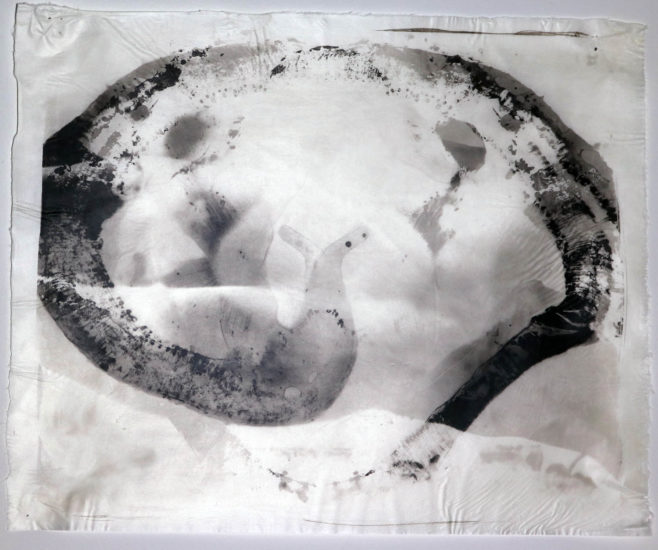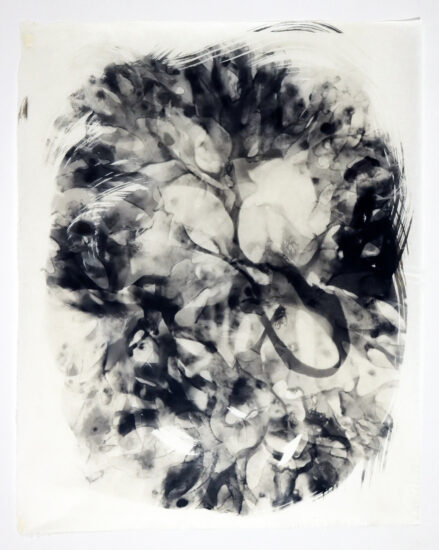A PDF of Totemic Objects from the Ocean

Please click on the sentence below to view this PDF:
Through processes of transformation I present these palladium prints of objects from the ocean.
I have placed a few works from my current ocean portfolio in the above linked PDF. These works have grown from my sense of sanctuary in long walks at the ocean’s edge during this time of Covid lockdown.
Feeling wave upon wave wash over the sand moved me into the cyclic and expansive motion of the ocean. To express the ocean’s vastness and materiality, I pick up remnants of sea life washed onto the sand.
Placing these fragments of sea life directly into my enlarger, I make camera-free large 16 X 20 inch negatives to contact print using brushed palladium metal on translucent Japanese gampi paper and expose the negatives and paper using the direct rays of the sun.
When I place these fragments in my enlarger, the depth of field is similar to a lens that is wide open on a large format camera. Some details are sharply focused while others are softly embraced.
Using palladium allows for tonal distinctions of extreme subtlety. Sometimes when I paint the palladium on the paper, I paint only the shape of the object and leave the rest of the paper open. This I have done with the corals. Centering the corals allows for the concentration of their forms.
